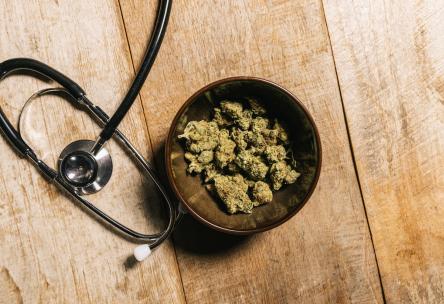Could medicinal cannabis be an effective treatment method for what’s ailing you? Here’s how to tell

Over the course of its lifetime, marijuana has gone from being one of humanity’s oldest cultivated crops, to a drug punishable with jail time, to a viable and effective medicine for millions of Americans.
That path toward using marijuana for medicinal purposes started in 1996, when California voters first legalized the plant to treat illnesses. Today, almost 70 percent of the U.S. population lives in a state where pot is a legal medication, with 33 states and the District of Columbia allowing doctors to prescribe marijuana. Many other countries have legalized medical weed, including Canada, Australia, Italy, Greece, Chile, Germany, and Israel.
While marijuana has undoubtedly become popular in medicine, are there certain risks involved? And more importantly, could it be an effective treatment method for your ailments?
What is Medical Marijuana?
Marijuana is a strain of the cannabis plant that features a high ratio of delta-9-tetrahydrocannabinol (THC), a chemical that produces temporary psychoactive effects. THC has been shown to decrease pain, inflammation, and muscular problems. The plant also produces another property, cannabidiol (CBD), which has been shown to help treat pain, anxiety, insomnia, and other ailments, with no psychoactive effects.
Medical cannabis often has varying ratios of THC to CBD, depending on the condition and patient. Some treatments (for instance, for children) are low in THC and high in CBD, and thus not mind-altering in any way. Others, particularly for pain in adult patients, are high in THC.
While medical marijuana is essentially the same product as its recreational sibling, the type used for treatment is distributed through state-licensed medical marijuana dispensaries in a variety of forms, including capsules, lozenges, oil tinctures in a dropper, skin patches, sprays, edible candies, oils to be inhaled as a vapor using an electronic cigarette (known as vaping), and dried marijuana flower buds that are meant to be smoked.
How Can You Get Prescribed Medical Marijuana?
More than two million Americans have medical marijuana cards, which can be obtained by scheduling an exam with a doctor. Regulation of medical marijuana varies by state, with most permitting it as a treatment for conditions like Crohn’s disease, glaucoma, epilepsy, multiple sclerosis, PTSD, hepatitis C, Parkinson’s, ulcerative colitis, and HIV/AIDS. Individuals can sometimes also be prescribed medical marijuana when they have nausea from chemotherapy, chronic pain, cerebral palsy, sickle cell disease, and terminal illnesses.
For those living in California, people with migraines and arthritis can also sometimes be prescribed a medical marijuana card. But in states like Texas and North Carolina, for instance, only patients with intractable seizures are allowed marijuana, and no other conditions are included. And, in the same country where 10 states have fully legalized pot for recreational purposes, 17 states allow no medical marijuana at all.
Is Taking Medical Marijuana Risky?
For most people, marijuana is not addictive. It’s widely considered safe, with no serious long-term side effects. Even in the short term, some of the only unintended consequences that stem from medical marijuana use tend to be dry eyes, a headache, increased appetite, and fatigue.
Marijuana use of any kind remains technically prohibited by the federal government. However, a law enacted in 2014 placed limitations on the enforcement of those laws in medical cases in states where medical cannabis has been legalized. So, despite the federal ban, there’s no legal jeopardy for medical marijuana cardholders in states where it’s legal.
If you’re traveling with medical marijuana, extra precautions are required. Because of the federal ban, the Transportation Security Administration (TSA) lists medical marijuana as a prohibited item. Since federal TSA airport screeners are focused on security threats and terrorism, they generally aren’t searching for pot, but if they come across it (whether it’s medical or recreational), they’re trained to turn the case over to local police.
Is Medical Marijuana a Viable Treatment Option for Me?
Most health insurance plans don’t yet cover medical marijuana treatments. One of the reasons for the hesitation is the lack of research. For decades, it was illegal to grow, ingest, or study the cannabis plant. And with no federal support, there haven’t been the kind of rigorous long-term studies and trials performed, which are standard before any therapy is fully accepted.
Despite a lack of federally-backed research, there are millions of happy proponents of medical marijuana. A survey found that 92 percent of patients using medical cannabis considered it helpful for their condition.
The research that has been conducted is promising. One study in animals, for instance, showed that marijuana extracts may help kill certain cancer cells and reduce the size of others. Scientists are also conducting trials looking at marijuana’s effect on, among other conditions, pain, HIV/AIDS, multiple sclerosis, and substance abuse.
Interestingly, a study reported in the American Journal of Drug and Alcohol Abusefound that pot use among teens decreased in states where medical marijuana is legal. This could imply that by legalizing marijuana as a common medicine, some of the curiosity (especially in the young) about cannabis is reduced.
The legalization of medical cannabis has also been linked to fewer prescriptions, according to a 2016 report in the journal Health Affairs.Researchers found that in states where this once-notorious but now accepted plant-based therapy is legally available, prescriptions dropped for anti-depressants, seizure medications, sleeping pills, anti-nausea drugs, and anxiety medications.